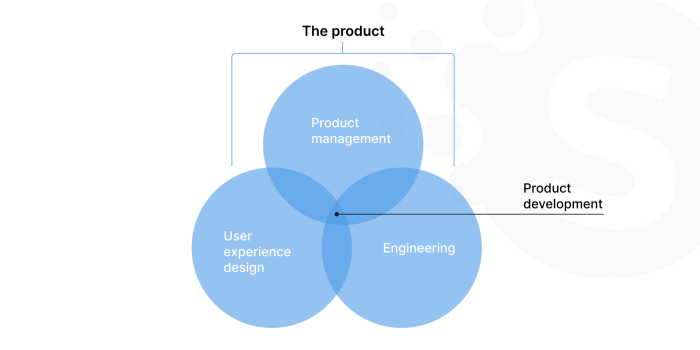In today’s globally interconnected world, businesses are constantly seeking efficient and cost-effective ways to develop and maintain their software applications. Nearshore software development has emerged as a powerful solution, offering a compelling alternative to both onshore and offshore outsourcing. This comprehensive guide delves into the intricacies of nearshore software development teams, exploring their benefits, challenges, and best practices.
What is Nearshore Software Development?
Nearshore software development involves outsourcing software development projects to a country geographically close to your own. Unlike offshore outsourcing, which often involves significant time zone differences and cultural gaps, nearshore outsourcing leverages the benefits of a different location while minimizing the logistical complexities. This proximity often translates to easier communication, reduced travel time, and a more streamlined collaboration process.

Source: softermii.com
Common nearshore destinations for US companies include Mexico, Canada, and Central America, while European companies might look to Eastern European countries.
Key Advantages of Nearshore Software Development
- Reduced Time Zone Differences: Minimized time zone differences facilitate seamless communication and quicker turnaround times on projects.
- Cultural Proximity: Similar cultural values and business practices often lead to better understanding and smoother collaboration.
- Cost Savings: While not as dramatically low as offshore rates, nearshore development still offers significant cost advantages compared to onshore teams.
- Improved Communication: Easier and more frequent communication minimizes misunderstandings and project delays.
- Easier Travel and On-site Collaboration: Physical proximity makes it easier to visit the development team and collaborate in person when needed.
- Access to Specialized Skills: Nearshore locations often possess a skilled workforce with expertise in specific technologies.
- Stronger Intellectual Property Protection: Geographical proximity can offer greater control and security regarding intellectual property.
Choosing the Right Nearshore Development Partner
Selecting the right nearshore software development team is crucial for project success. Consider these factors:
Factors to Consider When Selecting a Nearshore Partner
- Technical Expertise: Ensure the team possesses the necessary technical skills and experience relevant to your project.
- Communication Skills: Effective communication is paramount. Assess the team’s fluency in your language and their communication style.
- Project Management Methodology: Determine if their project management approach aligns with your preferred methodology (e.g., Agile, Waterfall).
- Company Culture and Values: Look for a company with a culture that aligns with your own and prioritizes transparency and collaboration.
- Security and Data Protection: Verify their commitment to data security and compliance with relevant regulations.
- Client References and Testimonials: Review past projects and client feedback to gauge their performance and reliability.
- Pricing and Contract Terms: Carefully review the pricing structure, contract terms, and payment schedules.
- Legal and Regulatory Compliance: Ensure the development team adheres to all relevant legal and regulatory requirements.
Challenges of Nearshore Software Development
While nearshore development offers many advantages, it’s essential to acknowledge potential challenges:

Source: skyward-soft.com
Potential Challenges
- Language Barriers: While often less significant than with offshore teams, language differences can still pose communication challenges.
- Cultural Differences: Despite geographical proximity, subtle cultural differences can impact collaboration and project management.
- Time Zone Differences (though minimized): Even with reduced time zone differences, scheduling meetings and coordinating work can still require careful planning.
- Potential for Higher Costs than Offshore: Nearshore development is generally more expensive than offshore outsourcing, though still often cheaper than onshore.
- Finding the Right Partner: Thorough due diligence is crucial to identify a reliable and competent nearshore partner.
Best Practices for Nearshore Software Development
To maximize the benefits and minimize the risks, consider these best practices:
Best Practices for Success, Nearshore software development team
- Clearly Defined Requirements: Ensure detailed and unambiguous project requirements are established upfront.
- Regular Communication: Maintain frequent and open communication channels with the development team.
- Robust Project Management: Implement a robust project management system to track progress and address issues promptly.
- Cultural Sensitivity Training: Consider providing cultural sensitivity training to bridge any communication gaps.
- Strong Contractual Agreements: Establish a clear and comprehensive contract outlining responsibilities, timelines, and payment terms.
- Regular Progress Reviews: Conduct regular progress reviews to monitor project performance and address any concerns.
- Dedicated Point of Contact: Designate a dedicated point of contact on both sides to streamline communication.
Frequently Asked Questions (FAQ)
- Q: What are the main differences between nearshore and offshore software development?
A: Nearshore development involves outsourcing to a geographically closer country, resulting in reduced time zone differences and cultural gaps compared to offshore outsourcing, which typically involves significantly greater distances. - Q: Is nearshore software development more expensive than offshore?
A: Yes, generally nearshore development is more expensive than offshore but significantly less expensive than onshore development. - Q: How can I find a reputable nearshore software development team?
A: Thoroughly research potential partners, check client testimonials, review their portfolio, and assess their communication skills and technical expertise. - Q: What are the key benefits of using a nearshore team?
A: Key benefits include improved communication, reduced time zone differences, cultural proximity, cost savings compared to onshore development, and easier travel and collaboration. - Q: What are the potential risks associated with nearshore development?
A: Potential risks include language barriers, cultural differences, and the need for careful partner selection and contract negotiation.
Conclusion
Nearshore software development offers a compelling blend of cost-effectiveness, accessibility, and streamlined collaboration. By carefully selecting a partner and implementing best practices, businesses can leverage the benefits of nearshore teams to accelerate their software development projects while mitigating potential risks. Remember to prioritize clear communication, robust project management, and a strong contractual agreement to ensure a successful partnership.

Source: lavorg.com
Call to Action
Ready to explore the potential of nearshore software development for your next project? Contact us today for a free consultation and let us help you find the perfect nearshore team to meet your needs!
Clarifying Questions: Nearshore Software Development Team
What are the key benefits of choosing a nearshore team over an offshore one?
Key benefits include improved communication, reduced time zone differences, easier travel for collaboration, and potentially stronger cultural alignment.
How can I ensure effective communication with a nearshore team?
Establish clear communication protocols, utilize project management tools, and schedule regular meetings to foster transparency and collaboration.
What factors should I consider when selecting a nearshore development partner?
Consider factors such as team expertise, cultural compatibility, security protocols, and the partner’s experience with similar projects.
What are the potential risks associated with nearshore development?
Potential risks include language barriers (even with nearshore teams), differing legal frameworks, and potential challenges related to intellectual property protection.
How can I mitigate the risks of working with a nearshore team?
Thorough due diligence, well-defined contracts, regular communication, and potentially utilizing a local representative can help mitigate these risks.
